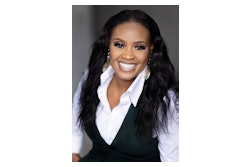Women of color, particularly African-American women and Latinas, have long been the mainstay of their communities. Researchers have empirically demonstrated that children’s health outcomes, social standing and educational achievement can all be traced to the mother’s successes and aspirations.
My own family is a case in point.
When growing up my mother always intoned the words “when you go to college,” never “if you go,” although she herself had not attended. My grandmother, an immigrant from Trinidad, had not completed high school, but education was so highly regarded that she (in embarrassment) typically withheld that information from her friends.
Attending an all-girls high school taught me that girls can be athletes and scholars; matriculating at historically Black Howard University showed me that African-Americans could be poets, politicians and physical chemists.
It is somewhat ironic that while women set the stage for family life, raise the children and moderate the climate in the home, most societies have been slow to educate their daughters and instead place restrictions on them, limiting their legal rights and their social roles. As we observe the continued reluctance in some groups to grant rights to women, psychological explanations vary from the suggestion that men fear competing against women to a deep-seated need for an underclass.
Indeed, male dominance mirrors the racially motivated dominance that nation-states have often promulgated throughout the world. Both are manifestations of power and control over those seen as less worthy.
The limitations placed on women are found in academia as well. In years past, schools and universities were dominated by — and even restricted for — boys and men only. Males (White males) were the students, the faculty and the administrators.
Students and faculty of color were limited to designated institutions, and White women were similarly directed to institutions designed for them alone.
My own institution was founded under such circumstances. In 1932, there was no
Catholic university in Connecticut that accepted women, so the Sisters of Mercy established Saint Joseph College — a brave move in the height of the Great Depression.
These race- and gender-specific institutions (White male, White female, people of color) served initially to reinforce and reify the social status of their students. Males saw their well-funded institutions as intrinsically superior in academic excellence as well as more prestigious. Institutions for women and/or people of color were judged as lesser.
Although such colleges did have fewer resources, when judged by outcomes, the quality might prove much stronger than imagined.
Paradoxically, educating women and people of color separately provided spaces to raise new questions, develop higher aspirations, and promote from within strong leaders who then reached beyond their socially confining roles. It is not coincidental that many African-American leaders graduated from historically Black universities, even today when predominantly White institutions are open to them.
Similarly, the confidence and success of women graduating from women’s colleges and universities still may at times surpass the outcomes of those graduating from co-ed institutions. (I greatly enjoy seeing this confidence develop in the undergraduate women who attend my institution as they move toward graduation. It is immensely rewarding and affirms our purpose and mission.) I am not at all suggesting a return to segregation, but I recognize that different psychological locations produce differing results and that women and people of color greatly benefit from opportunities to fully explore their potential without stigma and stereotypes.
One of the biggest challenges facing our universities and our society is how can we best capitalize on the diverse strengths that are available to us. Today, we are experiencing a cultural shift; women are now the majority in attaining undergraduate and graduate degrees. They outnumber men in almost all but a few technical disciplines. The disparity in women’s degree attainment compared to men has grown, especially among African-Americans.
Yet, even with the increase in women, White men continue to hold the majority of tenured professorships, most administrative positions and, according to a recent American Council of Education survey, most of the university presidencies. Indeed, White men even hold the majority of head coaching positions in women’s sports.
Academia, like some other institutions in our society, has not maximized the opportunities available through gender and ethnic diversity. As our communities rapidly become more diverse, our universities follow much too slowly.
For women of color, the position as a double minority remains a defining situation, as each identity (female and minority) retains negative assumptions and sets up challenges that others do not face. We have taken that first step in educating young women and encouraging students from diverse locations, but the opportunities for leadership and respect are still too often hard won.
Certainly, academia could and should take the opportunity to lead society in equity and meritocracy. Equity should be available so that access to education and opportunity is real and students have the support they require for success.
Meritocracy should come with the recognition of diverse talents and perspectives as we assess our problems and the multiple paths to their solutions. D
Dr. Pamela Trotman Reid is president of Saint Joseph College in West Hartford, Conn.


















